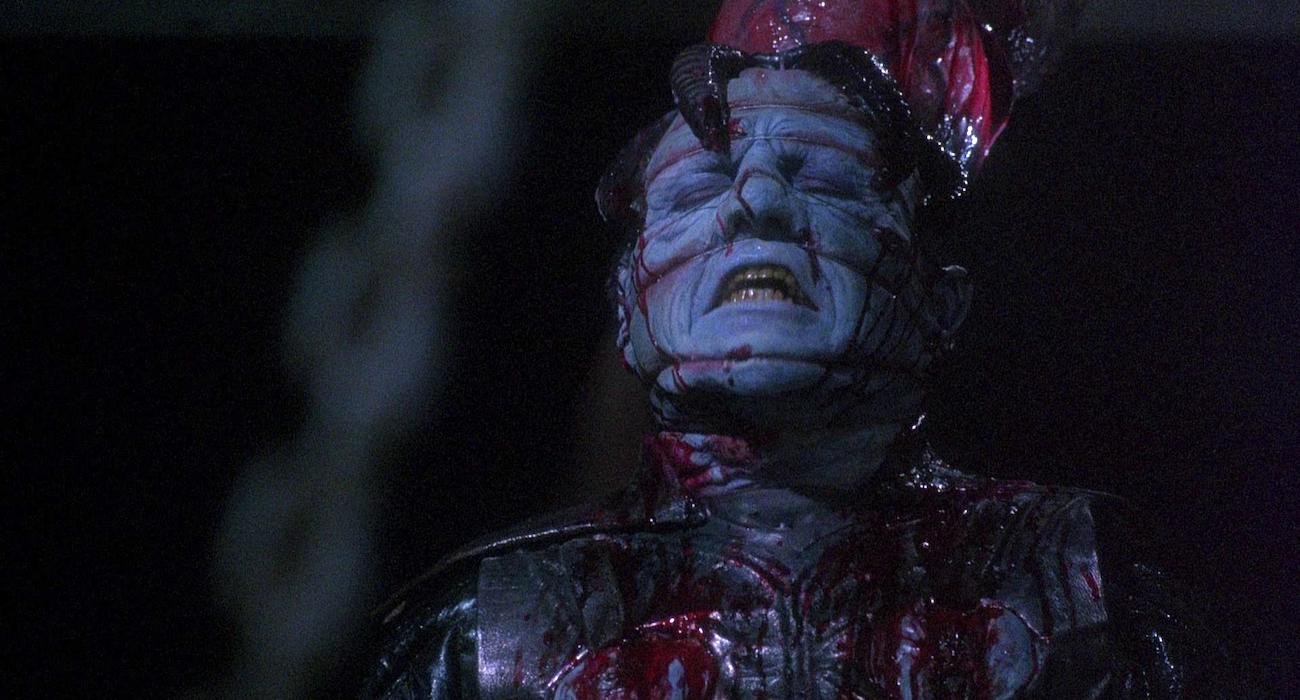Tony Randel’s Hellbound: Hellraiser II from 1988 celebrates its 35th birthday on December 23rd. Though it doesn’t quite reach the heights of Clive Barker’s original, it is easily the best of all the sequels. Won’t you join me for a look back?
Immediately after the macabre events of the previous film, Kirsty (Ashley Laurence) wakes up in a psychiatric hospital. Unable to be comforted by the detective assigned to her case (veteran character actor Angus MacInnes), she’s soon greeted by a detached clinician and hospital head Dr. Channard (Kenneth Cranham), and his warmer assistant, Kyle MacRae (William Hope). Upon seeing a vision of her skinned father pleading for help from the depths of Hell, Kirsty is determined to find one of the puzzle boxes known as the Lament Configuration that are able to open gateways to Hell.
Unbeknownst to her, though, is that Dr Channard has spent his life studying the boxes and the demonic priests known as the Cenobites that are often summoned when the configuration is unlocked. After secretly witnessing Dr Channard resurrect Kirsty’s murderous stepmother Julia (Clare Higgins), Kyle agrees to help Kirtsy with her quest. Additionally, along the way, we’re given snippets of the origin of the regal and malevolent lead Cenobite, Pinhead (horror icon Doug Bradley), and we’re introduced to traumatized savant Tiffany (Imogen Boorman).
Series creator and original film writer and director Barker opted to work a little more from behind the scenes for this entry, acting as an executive producer and receiving a story credit. Peter Atkins, in his first credited assignment, is responsible for the finished script. The neophyte writer is able to keep returning characters consistent. The story is ambitious, with an impressive amount of world-building on display. At 97 minutes, it does feel like narrative moments are stretched too thin. Proceedings get a little repetitive and beats are recycled from the first film. Footage is reused as well, with the recapping of events from the original going a little overboard. That all being said, there’s some momentum present to keep it all engaging.
Randel admirably maintains the atmosphere so memorably presented by Barker, though he swaps out the metaphysical Noir-ish aesthetic for grand dark fantasy. Randel and company also pump the brakes a bit on the sweaty sexuality of the first, opting for epic storytelling over disturbing intimacy. With a budget of $3M, the production design is truly amazing. With large sections of the movie taking place in a labyrinthine, Kafka, and Escher-inspired nondenominational Hell, the filmmakers go above and beyond to create a legitimately creepy and otherworldly atmosphere. Besides the cool Hell sets, Dr Channard’s office is pleasingly detailed and gives texture to the story’s background.
DP Robin Vidgeon returns, creating visual consistency, though I’d say this time out the picture is a little brighter. His efforts are unobtrusive, aimed at immersing us into the surreal and supernatural world on display. Gore effects are nicely done and all the Cenobites still rate as singularly disturbing creations, the Chatterer’s slight redesign being the only disappointment in that regard. I particularly liked the scene where an infernal vortex sucks someone right out of their skin. However, outside of the practical effects, there are a few dodgy visual effects that definitely show their age. As for the aural component, composer Christopher Young reprises his role as well, going bigger in fitting with the larger scope of the sequel while maintaining an eerie elegance.
Performances are all pretty strong. Laurence’s girl-next-door humanity plays well off of Cranham’s reserved and calculating demeanor. Bradley is, of course, commanding in the most important supporting role and the one that gives the story its creepiest energy. His ability to be regal while evoking otherworldly menace is second to none and a big reason why fans adore him and the character.
Tony Randel’s Hellbound: Hellraiser II builds on the foundation of Clive Barker’s original, although it sometimes misses its mark. Who knew Cenobites could be dispatched so easily? Peter Atkins isn’t as strong a writer as Barker, but he does a more than solid job at following up on a genre classic. At the end of the day, though, I always enjoy revisiting the film. Recommended for fans of sharp hooks, tentacles, and creepy mental hospitals.
Michael Cavender




